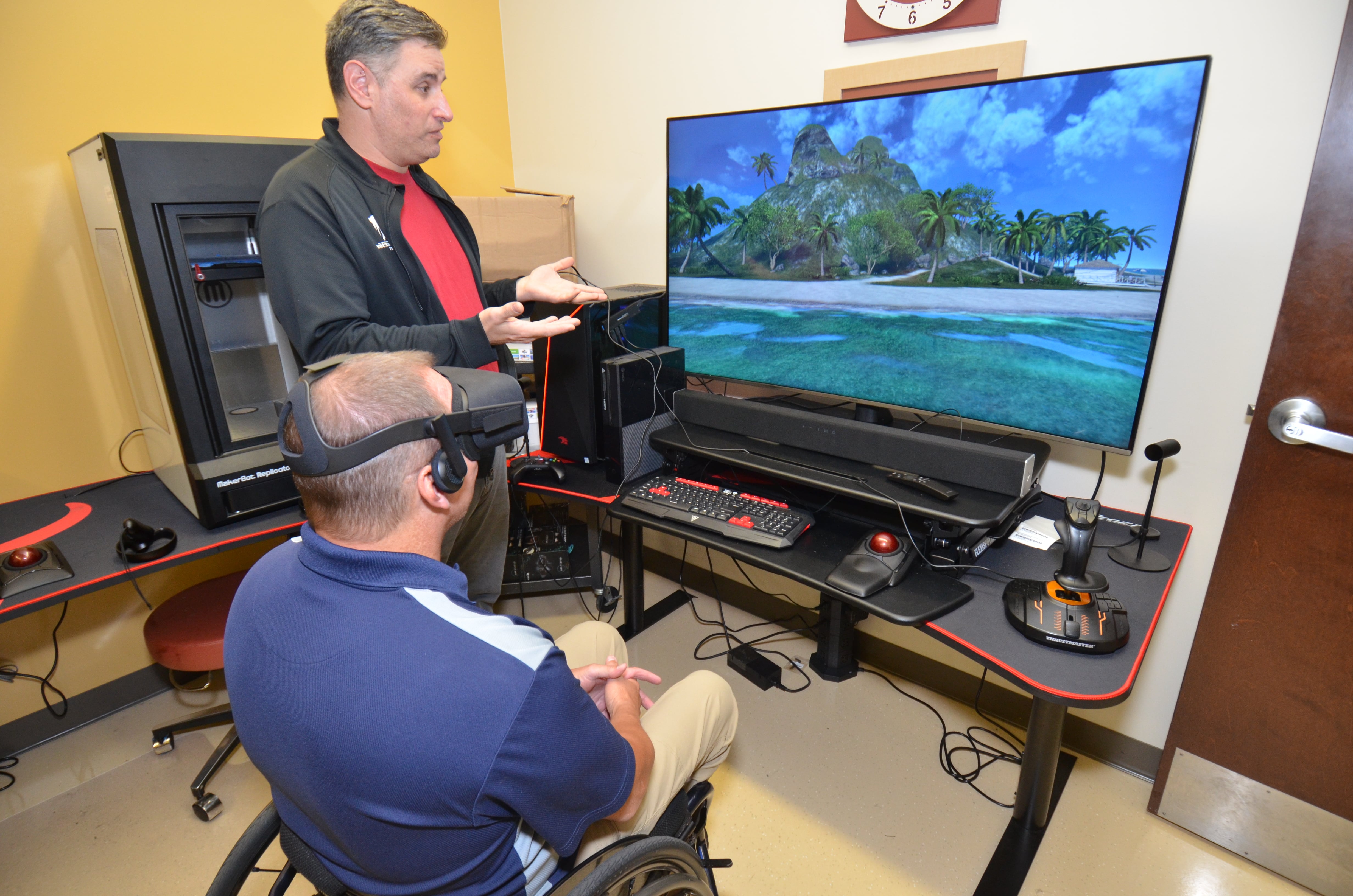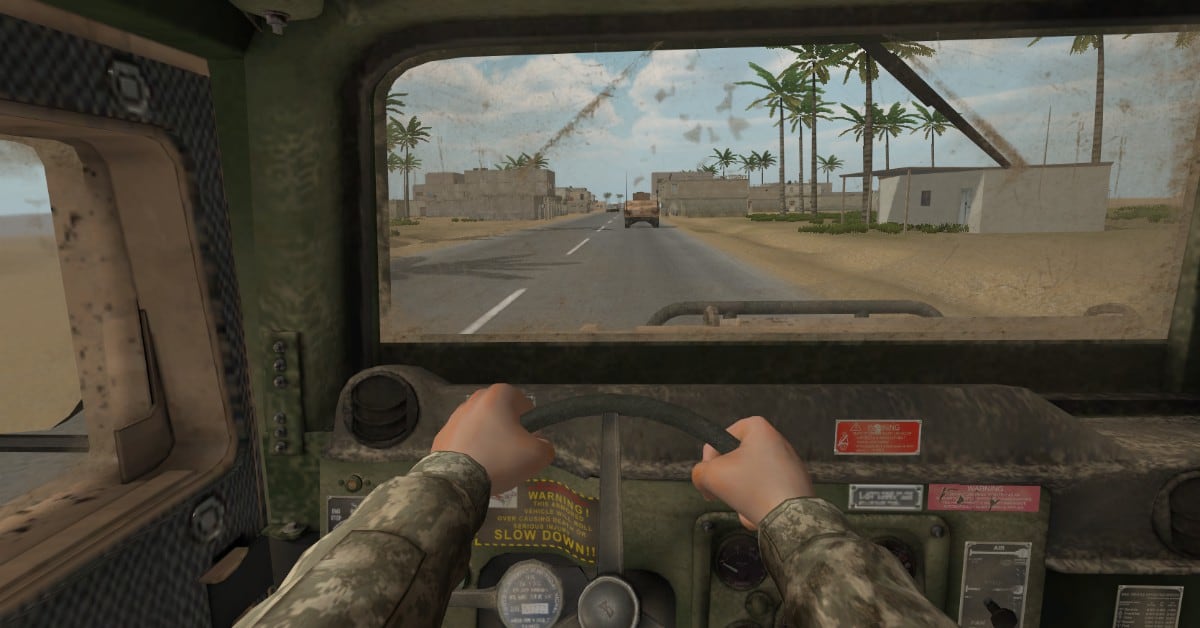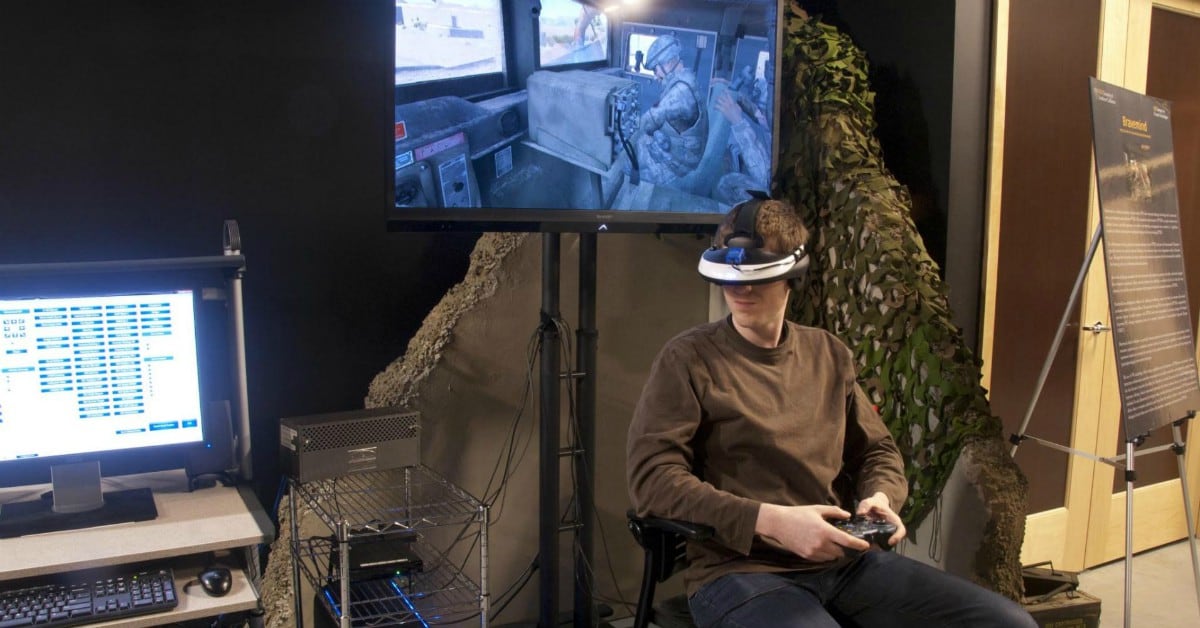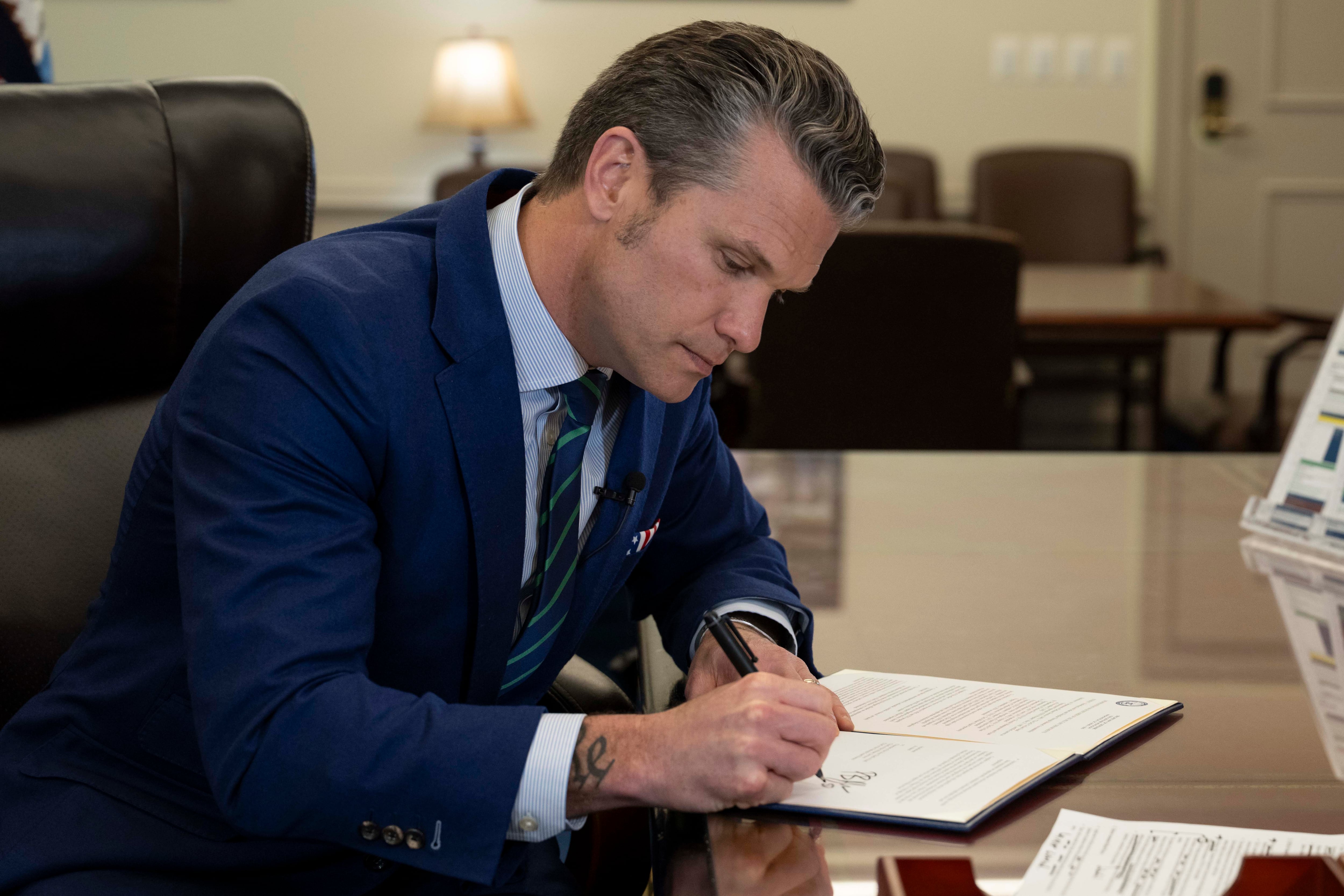Air Force veteran Beth Flasker loves sitting on the porch of a beach bungalow, watching the sunlight stream through the palm trees. She can see turtles below and fish in the water.
“It’s where I feel calmest,” said Flasker, 52, a Sarasota, Florida, native. “For me it’s just refreshing that there’s nothing around, there’s no buildings, there’s no sound...It’s just sunny and beautiful.”
The only thing missing is sand between her toes. But when she’s wearing the virtual reality headset at the James A. Haley Veterans’ Hospital, the waterside experience feels so lifelike that she almost doesn’t miss it.
“Instead of driving an hour and a half to go to the beach, I can put on a headset and have the same feeling,” said Flasker, who has chronic back pain from her years spent training military working dogs nearly her same size. “I’m happy, I’m relaxed, I have no care in the world.”
For Flasker and other veterans who seek therapy for physically debilitating conditions at the hospital in Tampa, Fla., the virtual reality experience has helped relieve pain. It has also been used elsewhere to help survivors of military sexual trauma and patients with post-traumatic stress disorder.

“We’re looking at some alternatives to the traditional remedies people were using to combat chronic pain,” said Jamie Kaplan, a recreation and virtual reality therapist. “They’re really looking outside the box to address the opioid issue.”
Kaplan has walked patients with ALS through the Louvre in Paris and helped a quadriplegic go scuba diving through the help of the headsets, which have become popular among video gamers and 3-D movie enthusiasts.
“I watch them as they’re doing it, so I can see what they see,” he said. “There’s one theme that has seaweed sticking out from the coral. Almost everyone tries to move it out with their hands. They get so immersed in it that they’re trying to do that.”
The program launched last year at the hospital, and already patients have seen a 2- to 3-point reduction on a 10-point pain scale and a more relaxed heart rate, Kaplan said.
Flasker’s sessions lasted only 15 minutes, but she could her pulse relaxing within the first few moments of her weekly trip to the beach.
RELATED

Skip Rizzo, director of medical virtual reality at the University of Southern California Institute for Creative Technologies, said virtual reality has been used for various forms of pain management — both physically and mentally. In addition to how it’s being used at Kaplan’s hospital, the technology can distract people from painful medical procedures, provide a game-like environment during physical therapy sessions and help patients heal from military sexual trauma and PTSD.
For the latter, Rizzo’s lab uses a simulation of scenes from Iraq and Afghanistan deserts and villages, as well as stateside military bases, bars and bathrooms, where these traumas often occur, to help patients process what they went through with the help of a therapist.
In one of Rizzo’s studies of a small group of military veterans, the majority of patients who underwent virtual reality therapy for PTSD no longer met the diagnostic criteria after three months. The results of the study were published in the Journal of Anxiety Disorders earlier this year.
To Rizzo, the possibilities are endless. The USC Institute for Creative Technologies is currently testing a tool for veterans to gain job interviewing experience with the help of virtual humans, based on similar work that has helped people with autism prepare for the workforce.
“Virtual reality in and of itself is just a tool. It’s just a technology,” he said. “It’s like — you want to watch a drama on TV and a movie? Or do you want to watch a comedy or a documentary? It’s the same thing with VR. VR is simply a tool, a technology to create virtual environments … for whatever their goal is.”

While a growing number of VA hospitals are using virtual reality therapy to treat patients, so far there’s no plan at the federal level to roll out the technology to all hospitals, said David Chandler, deputy chief consultant for rehabilitation and prosthetics service at the VA.
“The evidence for medical applications of VR is still very limited,” he said — though Rizzo would argue that’s short-sighted.
“My mission before I retire from my career is to make sure that every VA has access to this concept,” he said.
At James A. Haley, Kaplan said the therapy’s long-term effects really depend on the patient. But in at least one instance, he saw it help a double amputee get down to a zero on the pain scale after being stuck at a “seven for forever.”
“We’re doing this full-body approach … and focusing on the approach for individual patients,” he said.
Former Military Times reporter Josh Axelrod contributed to this report.
Military Times contributor and former reporter Natalie Gross hosts the Spouse Angle podcast. She grew up in a military family and has a master's degree in journalism from Georgetown University.





